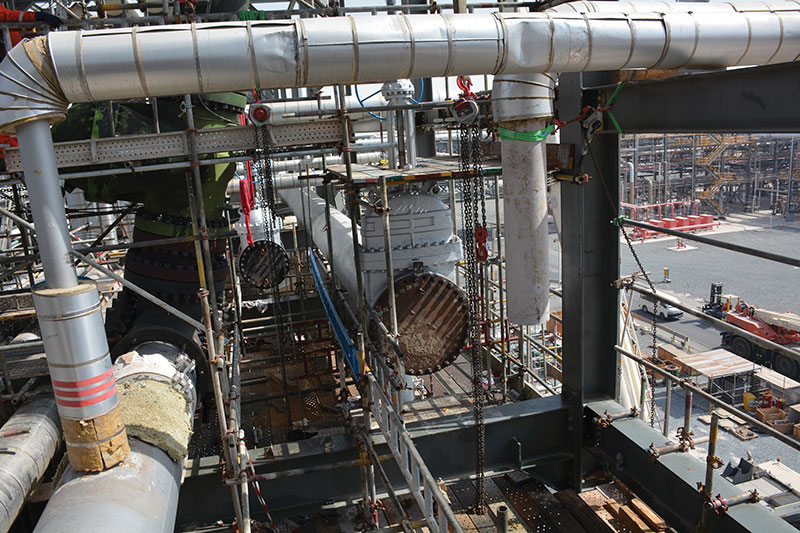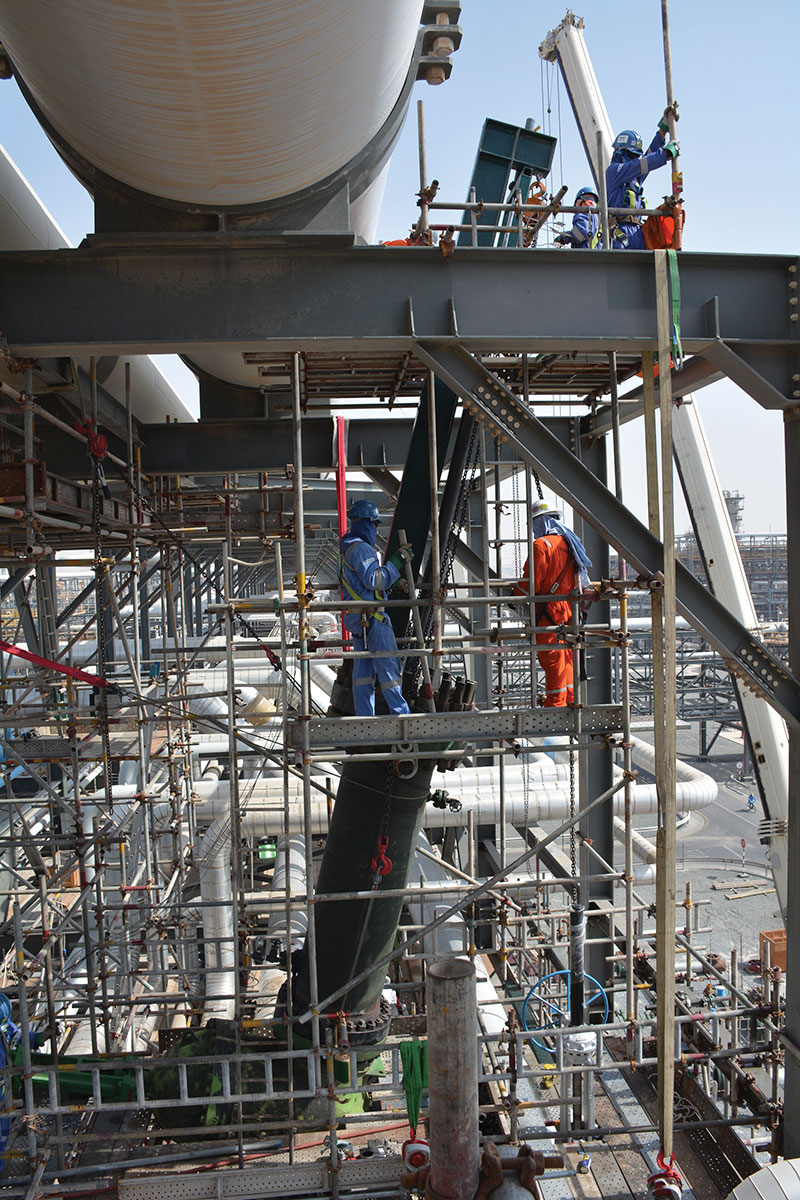September 2020, Vol. 247, No. 9
Features
Pipeline Challenges Limits of Leak-Tight Pipeline Isolation Capabilities
Special to Pipeline & Gas Journal
Maintaining the integrity of piping and pipeline infrastructure continues to be of vital importance to owners and operators, particularly as a higher number of pipelines move into their fourth and fifth decade of operation, far beyond their original design life.
Despite this, and due to continued integrity management programs and regular inspection, these pipelines continue to operate safely. As part of an integrity management program, pipeline and piping systems require inspection, maintenance, and repair to ensure efficient and safe operation.
Any interruption to the product flow can be costly for the operator and to the end user in terms of loss of production and potential application of penalty clauses for loss of supply.
Loss of integrity or malfunction generating a leak to the atmosphere adds major safety consequences and environmental hazards to the loss of production and inventory costs. There are also downstream consequences of prolonged loss of supply to the clients and end users.
To meet ever-increasing safety standards as the industry strives to continually reduce incidents, the repair and maintenance of aging process pipework and pipeline infrastructure has become increasingly important.
STATS was contracted to provide leak-tight pipeline isolation services on three pressurized steam lines as part of a larger restoration project at a major refinery in the Middle East.
Unlike the first project, this scope presented many challenges that would push the limits of current isolation technology and require further research and development to provide an engineered solution capable of isolating each of the high-temperature steam lines.
The purpose of the restoration project was to rebuild sections of the refinery following a fire that caused damage and limited refinery production capacity. The steam lines to be isolated included a 30-by-30-inch (762-by-762-mm), 24-by-6-inch (610-by-152-mm) and 36-by-10-inch (914-by-254-mm) with temperature ranging from 374° F to 718° F (190° C to 381° C) and pressures from 58 psi to 609 psi (4 bar to 42 bar).
Because the pipework was not piggable, the only viable option was to deploy the isolation plugs at locations through a branched fitting (either by welded split tee or mechanical clamp). The clamps with equal-sized branches allowed hot tapping to be conducted to provide access for STATS branch-installed self-energized plugging (BISEP) tool to be deployed into the live steam lines.
An additional challenge to the project was that the steam pipework was situated 66 feet (20 meters) off the ground, which required scaffolding to be erected at each location. However, space was limited due to surrounding pipework, which added further difficulties. A detailed risk assessment was conducted for each of the steam lines and isolation locations.
Working at heights requiring safety harnesses, the technicians also had to wear suitable protection from the intense heat radiating from the exposed pipelines. The crew worked reduced shifts while incorporating regular breaks and crew changes during all activities.
To test and qualify the seal material, a 10-inch test fixture was constructed at their operational facility in Abu Dhabi. Heat blankets were attached to a small canned-end fixture to replicate the extreme temperate and allowed STATS to deploy various prototypes with graphite and rubber seals.
After testing, it was determined a graphite seal and a high-temperature specialist rubber compound would both be capable of providing a leak-tight seal at 718° F and with a pressure of 609 psi.
The specialist rubber seal was selected for the project due to its performance during testing. Prior to the live deployment, final tests were conducted at the refinery using a 10-inch steam loop. This provided final confirmation that the rubber compound would perform as required at the temperature, pressure and flow conditions of the live pipelines.
STATS isolation methodology for the high-temperature steam lines was to use the U-bends in the system as the location for the isolation. This allowed deployment of a modified BISEP with a single high-temperature seal into the steam line to create a heat barrier.
Once the isolation was in place, the flow of steam was arrested, resulting in cooling behind the isolation barrier. This then generated condensate and slowly filled the U-bend with water and reduced the temperature. Once water-filled, a standard hydrogenated nitrile butadiene rubber (HNBR) dual-seal BISEP was deployed into the line behind the heat barrier.
The seals on the BISEP were each independently tested, and the annulus void between the seals was vented to create a leak-tight double block and bleed isolation. With the fully tested and constantly monitored BISEP isolating the steam line, an isolation certificate was issued to the client allowing breaking of containment activities to safely take place.
The client had requested that the split tee fittings were removed from the pipeline after the workscope was completed, so STATS methodology involved using the company’s inline isolation tool to enable the fittings to be cut and removed from the pipeline.
Once at location the plug was hydraulically activated to energize the locks and dual seals, and the annulus between the seals was vented to ambient to create a zero-energy zone. Each seal was then independently tested, proving both seals of the double block isolation were leak-free.
The pipework was then cut to remove the fitting and hot tap penetration, leaving a bevelled pipe end where a flange was welded onto the line.
With the fitting removed and a flange welded onto the pipeline, a full-bore valve was installed along with the temporary launcher. This allowed the Tecno Plug to be reattached to the stem bar, hydraulically unset and recovered into the launcher. The valve was then closed, providing a barrier to depressurize and vent the launcher and remove it from the system.
The newly installed pipeline was then tied into the new valve, allowing the line to return to operation without leaving any fittings on the line, and preventing any potential leak paths or future integrity issues.
This complex restoration project featured many technical challenges.
During the refinery restoration project and in conjunction with the steam line isolation scopes, STATS also conducted an additional 48 individual hot taps and BISEP deployments and 24 Tecno Plug isolations on hydrocarbon pipelines at the refinery.
The isolations ranged in size from 2 inches to 54 inches (51 mm to 1,372 mm). The design, manufacture and onsite activities were completed in only nine months. To the best of the company’s knowledge, this is the world’s first, t emporary double block and bleed isolation of large-diameter live steam pipelines via hot tapping and plugging technology.
While pipeline and piping systems remain in operation throughout the current COVID-19 pandemic, understandably some repair and maintenance scopes have been delayed. When normal operations resume, it will be ever more important to plan effectively with early engagement from the supply chain and to ensure the use of the safest and most efficient tools on the market.







Comments